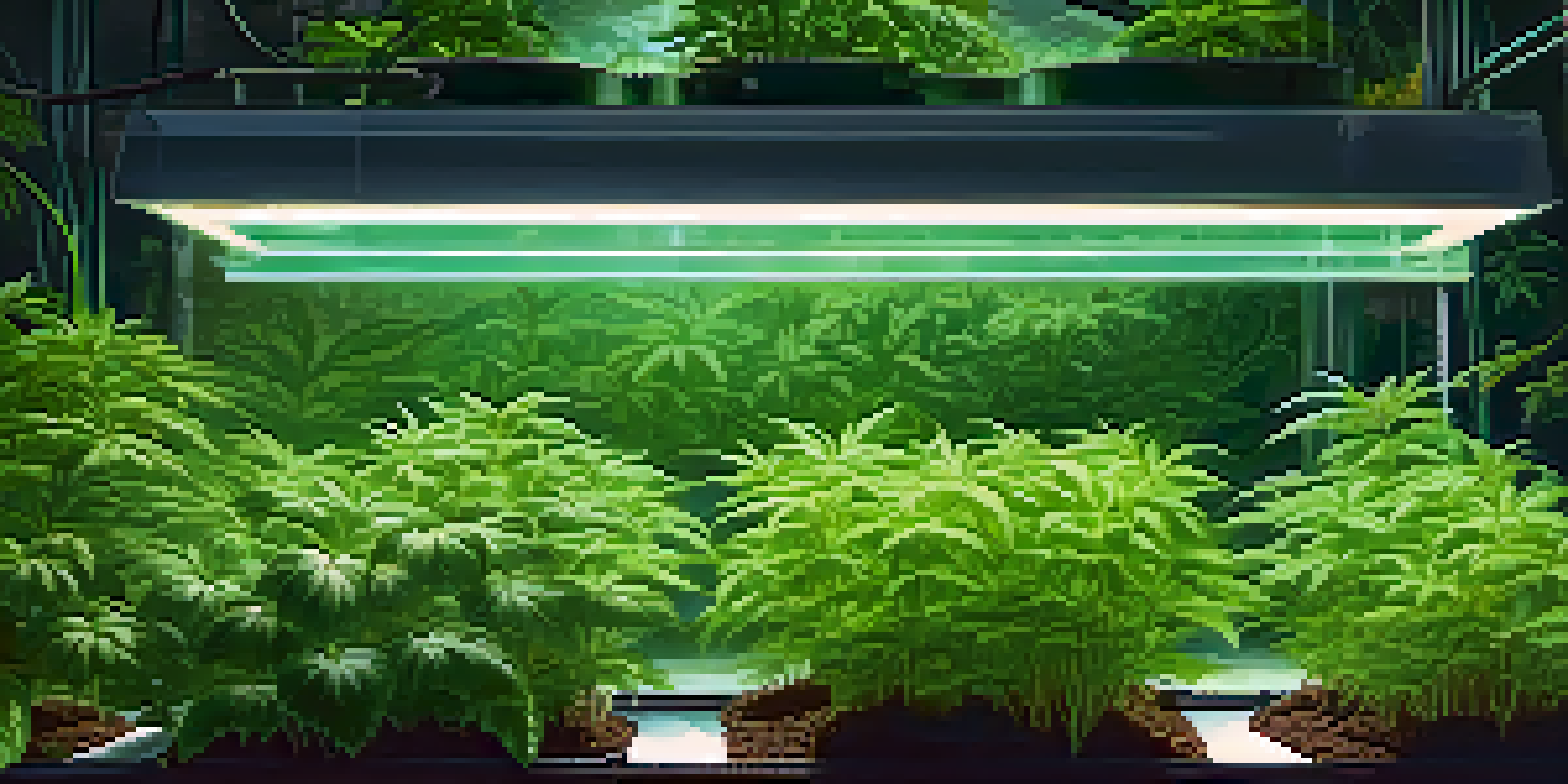Best Practices for Hydroponic Marijuana Cultivation Success

Understanding Hydroponics: A Beginner's Guide
Hydroponics is a method of growing plants without soil, using nutrient-rich water instead. This technique allows for greater control over plant growth, leading to healthier and more productive marijuana crops. By providing essential nutrients directly to the roots, hydroponics can significantly enhance the growth rate and yield of your plants. Plus, it reduces the risk of soil-borne pests and diseases, making it an attractive option for many cultivators.
Choosing the Right Hydroponic System
There are several types of hydroponic systems, including deep water culture, nutrient film technique, and aeroponics. Each system has its own advantages and is suited for different types of growers. For instance, deep water culture is great for beginners due to its simplicity, while aeroponics can yield the fastest growth rates. Understanding these systems will help you select the best fit for your cultivation goals.
Hydroponics Boosts Plant Growth
This method allows growers to cultivate marijuana without soil, enhancing growth rates and yields through direct nutrient delivery.
Essential Nutrients for Healthy Marijuana Growth
Marijuana plants require a balanced mix of macronutrients and micronutrients to thrive. The primary macronutrients include nitrogen, phosphorus, and potassium, while calcium, magnesium, and sulfur are essential secondary nutrients. Additionally, trace elements like iron, manganese, and zinc play a crucial role in plant health. Utilizing a quality nutrient solution tailored specifically for marijuana can ensure your plants receive everything they need to flourish.
Optimizing Light Conditions for Maximum Yield
Lighting is a critical factor in hydroponic marijuana cultivation as plants rely on light for photosynthesis. Different stages of growth require different light intensities and spectrums. For instance, during the vegetative stage, plants benefit from blue light, while red light is essential during flowering. Investing in high-quality grow lights and understanding how to manipulate light cycles can significantly impact your yield and quality.
Proper Light and pH Levels Matter
Understanding the right light conditions and maintaining optimal pH levels are crucial for maximizing marijuana health and productivity.
Maintaining Proper pH Levels in Your System
pH levels affect nutrient availability and overall plant health. For marijuana, the ideal pH range is typically between 5.5 and 6.5. Regularly testing and adjusting the pH of your nutrient solution ensures that your plants can effectively absorb the nutrients they need. Using pH up or down solutions can help you maintain the optimal levels, which in turn leads to robust growth and higher yields.
Temperature and Humidity: Finding the Right Balance
Temperature and humidity levels play a significant role in the success of your hydroponic garden. Generally, marijuana plants thrive in temperatures between 68°F and 77°F during the day and slightly cooler at night. Maintaining humidity levels around 40-60% is also crucial, especially during the flowering stage to prevent mold. Monitoring these environmental factors with sensors can help you create an ideal growing environment.
Effective Pest Management Strategies
Implementing integrated pest management techniques is essential for keeping marijuana plants healthy, even in a hydroponic setup.
Pest and Disease Management in Hydroponics
Even in a soil-less environment, pests and diseases can still pose a threat to your marijuana plants. Regularly inspecting your plants for signs of trouble, such as yellowing leaves or stunted growth, can help you catch issues early. Implementing integrated pest management strategies, like introducing beneficial insects or using organic pesticides, can keep your plants healthy without harming the environment.
Harvesting and Curing for Optimal Quality
Once your marijuana plants are ready for harvest, the curing process is essential for preserving flavor and potency. Properly drying your buds in a controlled environment helps to reduce moisture content and prevent mold. After drying, curing in glass jars allows for the development of rich flavors and aromas over time. Taking these steps ensures that your hard work results in high-quality product that you can enjoy.